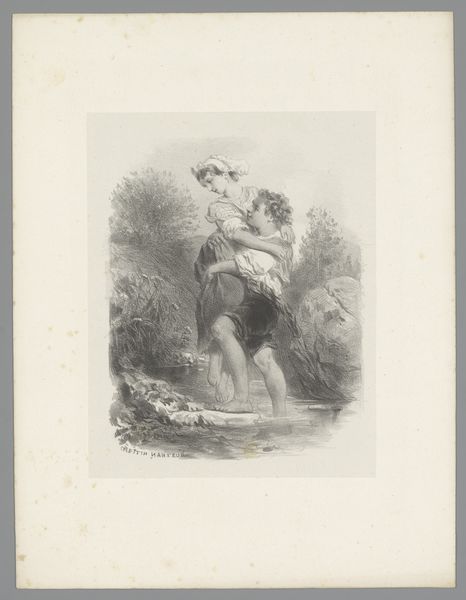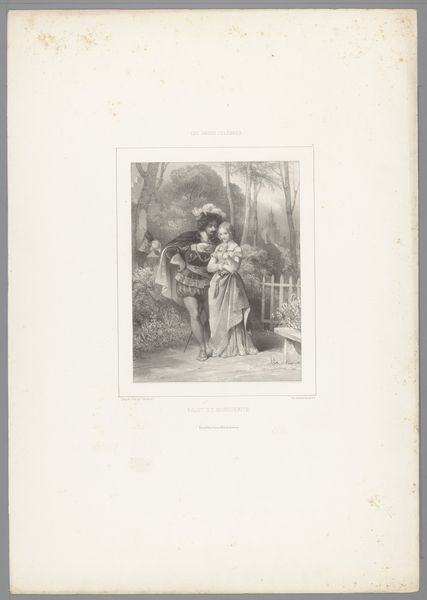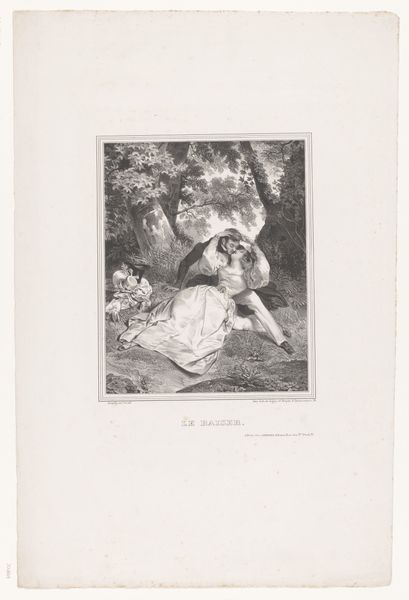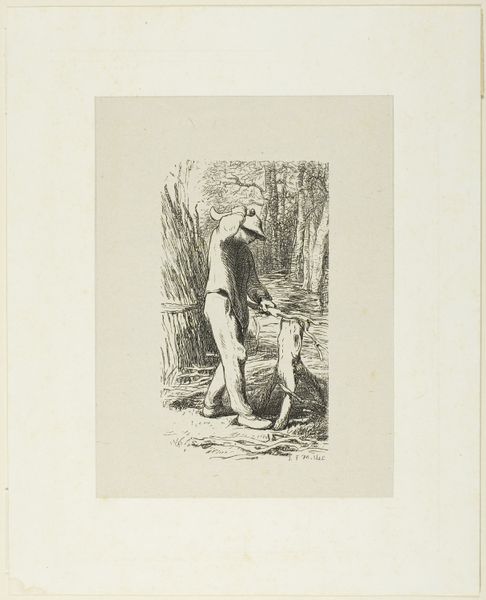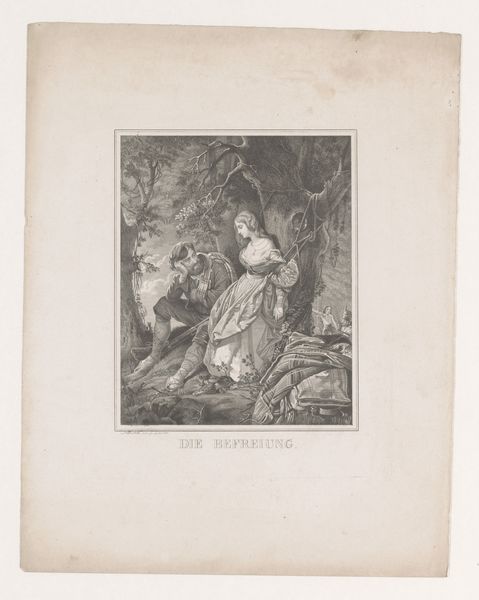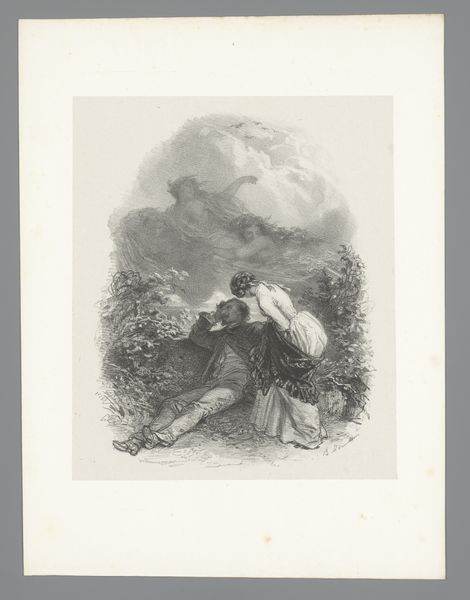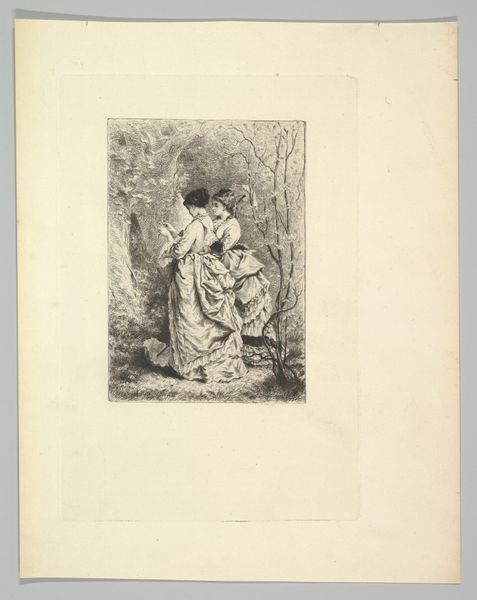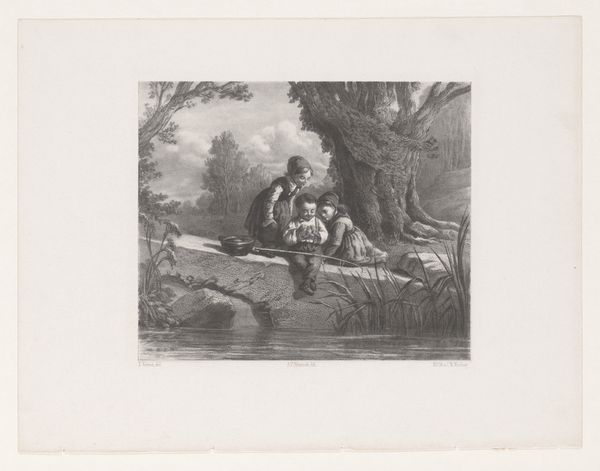
Dimensions: height 353 mm, width 279 mm
Copyright: Rijks Museum: Open Domain
Curator: This is "Meisje draagt jonger meisje over een beek," an 1866 engraving by Eugène Louis Pirodon. Editor: There's something tenderly precarious about this piece. A young woman carries a younger one across what appears to be a small stream, the delicate linework really captures a sense of lightness and shadow. Curator: The composition definitely draws the eye toward the figures. Pirodon masterfully employs contrasting values, especially within the dense foliage surrounding the idyllic crossing, establishing a clear foreground focus with the subjects. The water itself is quite subtly rendered. Editor: But what is the power dynamic we're seeing here? The engraving's Romantic style, paired with the positioning of the figures, seems to gesture toward classical ideals, doesn't it? An idealized and very gendered vision of support or perhaps even a burden? It speaks to the historical positioning of women and the roles they're often expected to fulfill. Curator: The romantic landscape is undeniable. But consider the figures; the formal relationships communicated through gesture, contour, and value generate tension. Note how the elder sister's strain in carrying the other informs her posture. There is an interplay of diagonal lines leading to a vanishing point to create a sense of space. Editor: The vanishing point is definitely intriguing. It feels very posed but I do think we should recognize the history that has led to this staged depiction and how it speaks about what kind of "idyllic" existence was prioritized. What expectations were reinforced through it, what were actively excluded. Curator: And Pirodon chooses engraving to depict that narrative! I would say, a medium notable for its ability to create controlled, repeatable lines and textures, further reinforces the rigidity of such structure, creating the perfect allegory. Editor: Indeed. While outwardly serene, the work really speaks volumes about our historical biases, through the lens of seemingly conventional tenderness, prompting a dialogue between its historical context and contemporary values. Curator: It’s a complex picture, a negotiation of form, light, and the inherent structures within representation. Editor: Ultimately, it compels us to recognize how even the most delicate visual offerings can illuminate underlying patterns of power.
Comments
No comments
Be the first to comment and join the conversation on the ultimate creative platform.
